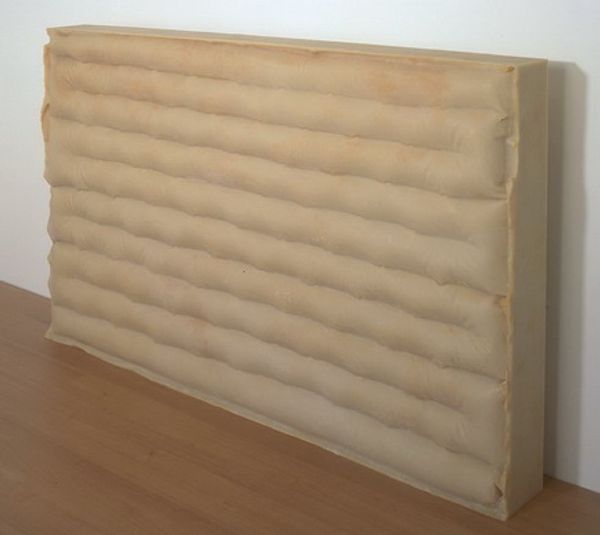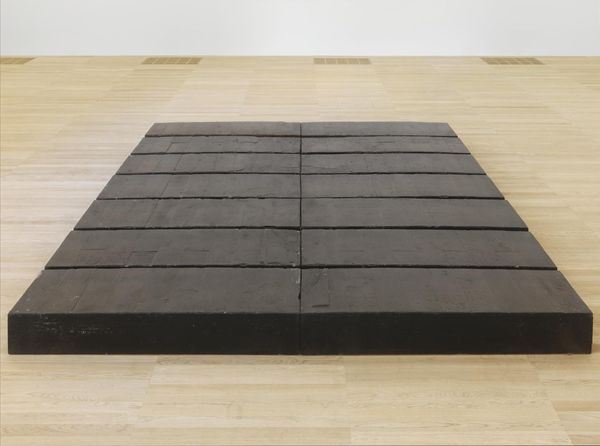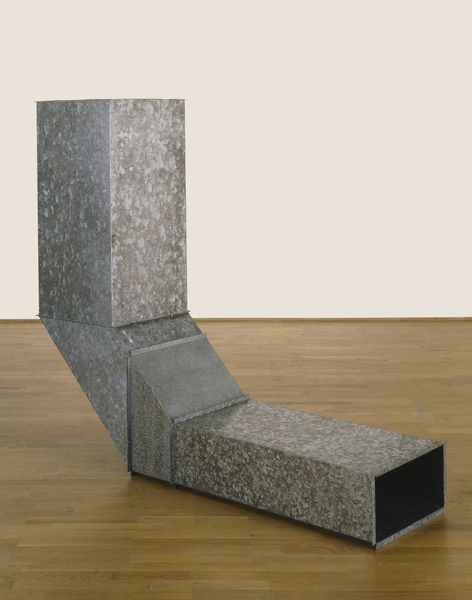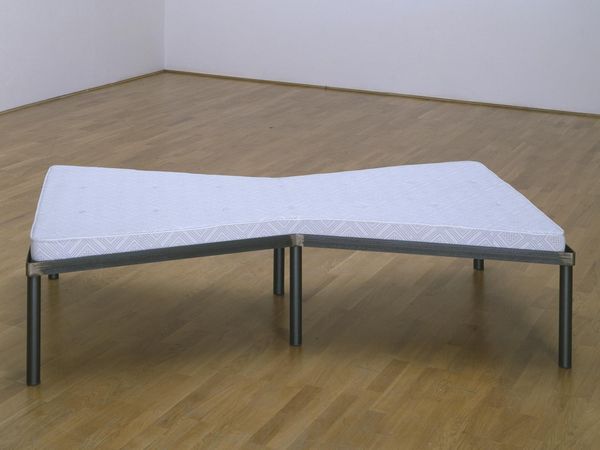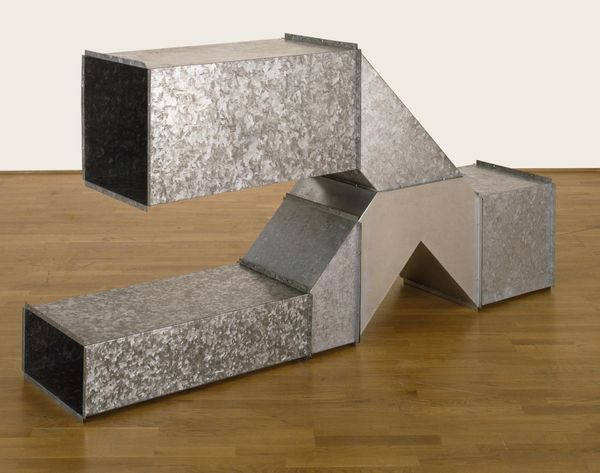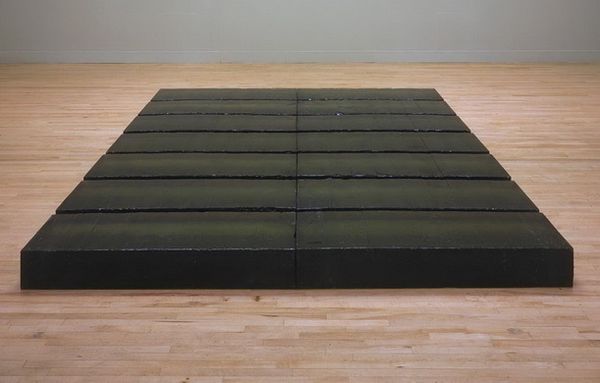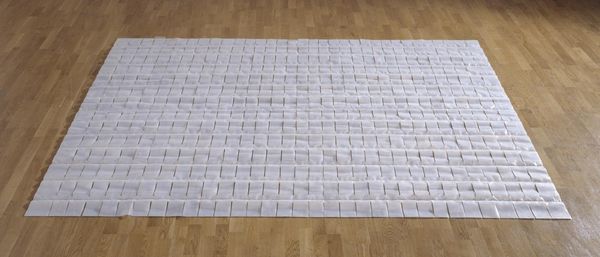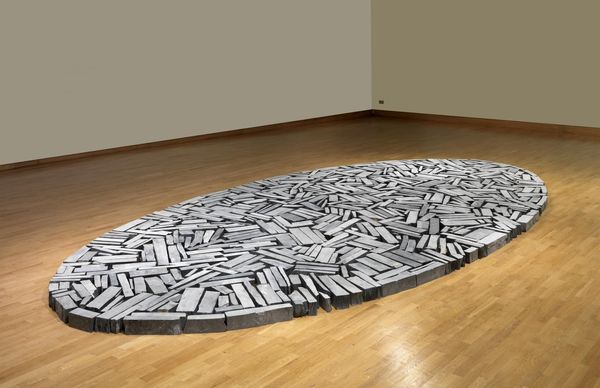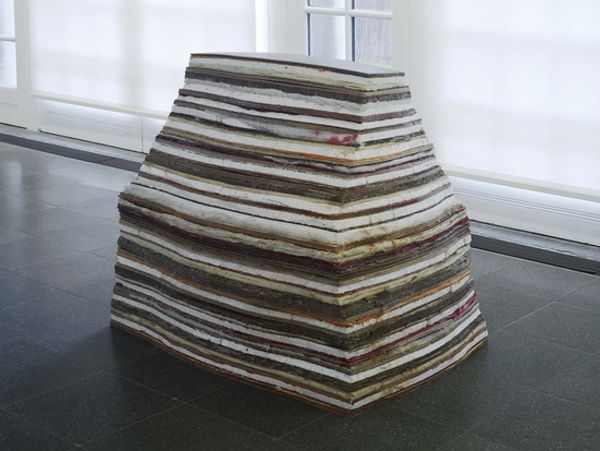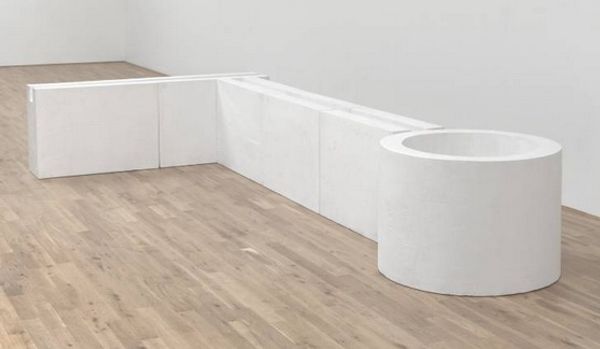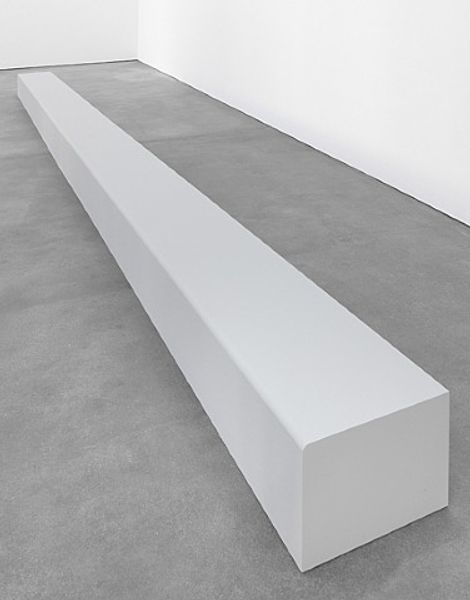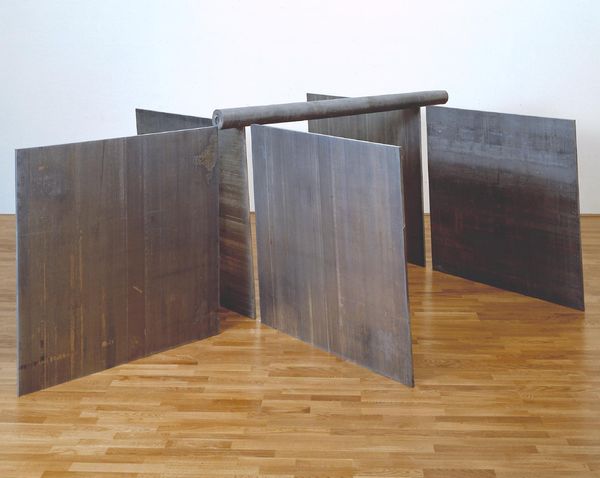
Dimensions: object: 610 x 1900 x 990 mm
Copyright: © Michaelangelo Pistoletto | CC-BY-NC-ND 4.0 DEED, Photo: Tate
Editor: Here we have Michelangelo Pistoletto's "Doormats," an object in the Tate collection. It is literally a stack of doormats. It's so...ordinary. What do you see in it? Curator: The doormat, a threshold object, signifies entry, welcome, but also exclusion. Stacked high, it becomes monumental, almost absurd. Does this speak to you of access, or perhaps the barriers to it? Editor: I guess it could. I hadn't thought of it that way. Curator: Consider the material. Coir, derived from coconut husks, is rough, humble. Does the sheer quantity elevate or negate its inherent symbolism? Does it become more than the sum of its parts? Editor: It's like he's taking something so common and making us rethink its meaning. It’s more complex than it seems. Curator: Precisely. The cultural weight of the everyday, amplified. Editor: Thanks, I see that now.
Comments
Join the conversation
Join millions of artists and users on Artera today and experience the ultimate creative platform.
tate 6 months ago
⋮
Doormats is one of five furniture sculptures in Tate’s collection (T12187–T12191) by the Italian artist Michelangelo Pistoletto. This work consists of twenty large doormats stacked neatly on top of one another. The pile of doormats is placed directly on the gallery floor. They are commercially produced and made of knotted tufts of coconut fibre set on a rubber backing. The artist cut each mat into a shape resembling two interlocking triangles, similar to a bow. Tate’s other examples from this series are based on a range of household objects – a door, a bed and two bookcases – and all share the bow shape. Pistoletto used the term Segno Arte (meaning ‘sign for art’) in connection with these works, signifying the transposition of a specific and unique form from the realm of the everyday into the realm of high art.
